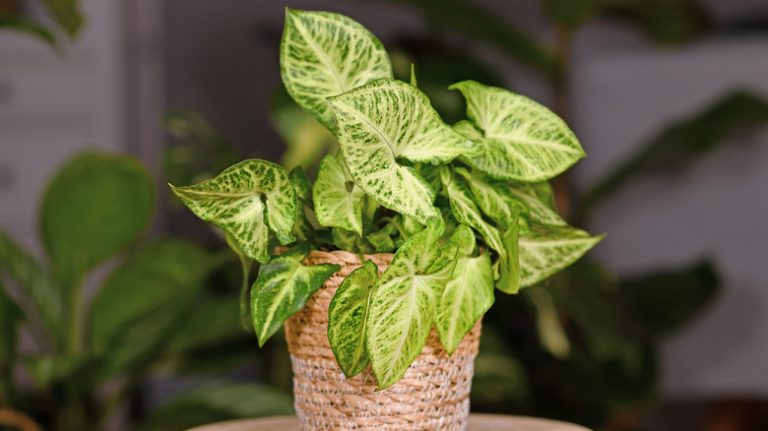Winterberry holly (Ilex verticillata) is a beautiful and vibrant addition to any home garden. This deciduous shrub is native to the eastern United States and is most commonly found in wetland areas. Winterberry holly is well-known for its stunning display of bright red berries, which appear in abundance during the winter months. These berries not only add a pop of color to the landscape, but also provide a valuable food source for birds, making it a must-have for bird enthusiasts.
Winterberry holly is easy to grow and care for, making it a popular choice among gardeners. It prefers moist, acidic soils and is typically found growing in wetland areas and along streams and ponds. Winterberry holly can be purchased at garden centers and online, with many cultivars and clones available for purchase. When planting, it is important to provide adequate spacing for growth, as winterberry holly can reach heights of up to 15 feet and spread up to 12 feet.
Pruning is an important aspect of winterberry holly care, as it helps to maintain the plant’s compact shape and promote healthy growth. It is best to prune the shrub in late winter or early spring, before new growth begins. Winterberry holly is dioecious, meaning there are separate male and female plants. In order to ensure abundant fruiting, it is necessary to have both male and female plants within the same vicinity for cross-pollination to occur.
There are several popular cultivars of winterberry holly, including ‘Winter Red’, ‘Sparkleberry’, and ‘Sprite’. ‘Winter Red’ is a popular choice for its large, bright red berries, while ‘Sparkleberry’ is known for its abundant fruiting and smaller stature. ‘Sprite’ is a compact cultivar that is well-suited for smaller landscapes. These cultivars offer a variety of options for gardeners looking to add some winter interest to their garden.
In conclusion, winterberry holly is a versatile and stunning shrub that can brighten up any home garden. Its bright red berries and vibrant foliage provide a pop of color during the winter months, while also attracting birds to the garden. With proper care and maintenance, winterberry holly can thrive in a variety of soils and climates. Whether you’re looking to add some color to your landscape or attract wildlife to your garden, winterberry holly is the ultimate plant for achieving both.
Winterberry
Winterberry, also known as Ilex verticillata, is a bright and colorful berry-bearing shrub that can be seen brightening up the dark winter days. It is an ongoing sparkler in the garden, especially the female varieties, such as ‘Afterglow’ and ‘Red Sprite’.
One of the most unusual things about winterberry is that it is only the female plants that produce the large and vibrant red berries that we are accustomed to seeing. The males, such as ‘Jim Dandy’ and ‘Apollo’, do not bear fruit. However, without the males, the females will not be able to produce berries. Therefore, it is necessary to have at least one male plant nearby to ensure successful pollination and fruiting.
Winterberry is a favorite of hungry pollinators and wildlife, such as birds, who are attracted to the brightly colored berries. It can even be seen as a natural wildfire in the winter landscape. The berries are not palatable, so they often remain on the shrub throughout the winter, providing a stunning sight against the dark background.
Winterberry is a versatile plant when it comes to soils. It can be grown in a variety of soils, ranging from wet to dry conditions. It is especially useful for areas prone to wetness, as it can help to absorb excess moisture. In between the plants, consider planting low-growing groundcovers or perennials to help suppress weeds and add diversity to the landscape.
When selecting a winterberry plant for your garden, keep in mind that only the females produce berries. If you want to enjoy the colorful berries, be sure to purchase a female variety. Some popular female cultivars include ‘Sparkleberry’, ‘Gold Finch’, and ‘Winter Gold’.
In terms of foliage, winterberry shrubs have a simple and elegant appearance. The leaves are green throughout the growing season, and they provide a nice backdrop to the bright berries. During the fall, the foliage may take on a golden hue before dropping off, adding another layer of color to the landscape.
Winterberry is a low-maintenance plant that does not require much attention once established. However, it is important to water it during periods of drought and stress. Mulching around the base of the plant can help conserve moisture and suppress weeds. Pruning should be done in early spring to maintain the desired shape and remove any dead or diseased branches.
Overall, winterberry is the ultimate plant for adding a pop of color to the winter garden. With its bright red berries and elegant foliage, it is a must-have for any landscape. By introducing winterberry into your garden, you can enjoy the afterglow of its colorful berries and provide a valuable food source for wildlife.
Description
Winterberry holly, scientifically known as Ilex verticillata, is a deciduous shrub native to the southern United States. It is a dioecious plant, meaning that individual plants are either male or female, and both are required for berry production. The female plants produce vibrant red berries that last throughout the winter months, making it a showy addition to any garden or landscape.
The winterberry holly has green foliage that turns gold in the fall, creating a stunning display of color. It is known for its showy berries, which are highly attractive to hungry birds during the colder months. The pruning of winterberry holly is crucial to maintain its health and shape, as well as to promote the growth of new branches and berries.
When purchasing winterberry holly, it is important to make sure you have both male and female plants for successful pollination and fruiting. Male plants are needed to pollinate the female plants and ensure berry production. There are many varieties available, but some popular ones include ‘Jim Dandy’ and ‘Winter Red’.
Winterberry holly is widely adaptable and can thrive in a variety of soils, including wet or boggy areas. It prefers full sun to part shade and is hardy in USDA zones 3 to 9. This makes it a popular choice for gardeners in many states across the country.
One interesting fact about winterberry holly is that it is a member of the holly family, which includes many other plants with similar characteristics. However, unlike other holly species, winterberry holly is unique in that it loses its leaves earlier in the fall and blooms and fruits in the winter months.
Winterberry holly is relatively easy to care for. It requires regular watering, especially during dry periods, to help establish its roots. Pruning should be done in the late winter or early spring to remove any dead or damaged branches and to shape the shrub for the upcoming growing season.
In summary, winterberry holly is an attractive shrub that adds a touch of holiday cheer to the garden with its bright red berries. It is a great choice for gardeners looking to attract birds and add color to their landscapes during the winter months. With its wide adaptability and relatively easy care, it is a popular choice for both experienced and novice gardeners alike.
Growing winterberry
Winterberry is a popular shrub that adds beauty and color to the winter garden. It is known for its bright red berries that decorate the landscape when other plants have lost their leaves. If you want to attract more pollinators to your garden and enjoy the vibrant colors of winterberry, read on.
Winterberry holly is native to North America and is commonly seen in wetland areas, where it naturally grows in moist and acidic soils. However, it can also be grown in drier conditions, as long as it receives enough water. Winterberry holly can tolerate a range of sunlight conditions, from full sun to partial shade. However, it produces more berries when grown in full sun.
When planting winterberry, make sure to provide enough space for the shrub to grow. Some varieties can reach up to 8 feet tall and wide. If you have a smaller garden, consider planting a dwarf variety, which will stay smaller and more manageable.
Winterberry plants are dioecious, meaning they have separate male and female plants. Only female plants produce berries, so make sure to have at least one male plant nearby for pollination. The male plant should be within 50 feet of the female plant for effective pollination.
Winterberry holly is available in various varieties, which can be purchased online or at local nurseries. Some popular varieties include ‘Afterglow’, ‘Red Sprite’, and ‘Winter Red’. Each variety has its own unique characteristics and berry color, ranging from bright orange to large, showy red berries.
When establishing winterberry plants, make sure to water them regularly during the first year. After they are established, they are quite resilient and can tolerate periods of drought. Adding a layer of mulch around the base of the plants will help conserve moisture and prevent weed growth.
Winterberry holly is also a great choice for attracting wildlife to your garden. The bright red berries are a favorite food source for birds, and the dense shrub provides shelter and nesting sites. If you want to create a wildlife-friendly garden, winterberry is a must-have plant.
In summary, winterberry holly is a beautiful and unusual shrub that adds a splash of color to the winter garden. With its vibrant berries and attractive form, it is a popular choice for both home gardeners and landscaping professionals. Whether you plant it for its pollination benefits, wildlife value, or simply for its showy berries, winterberry is sure to sparkle in your garden.
Common problems
Winterberry holly is generally a resilient and low-maintenance plant, but there are a few common problems that you may encounter when growing this beautiful shrub.
1. Lack of fruit: One of the most common issues with winterberry holly is a lack of fruit production. This can occur if you have a male plant and no females nearby for pollination. To ensure fruiting, it’s best to plant both male and female varieties in your garden.
2. Wildfire: Winterberries are known for their bright red fruit, which can be attractive to birds and other wildlife. However, in areas prone to wildfires, the dried fruit can become fuel for the fire. It’s important to remove any dead or dried winterberries prior to the wildfire season to reduce the risk of fire.
3. Deer browsing: Winterberry holly is a popular food source for deer, especially in the winter months when other food options are scarce. If you have a deer problem in your garden, you may want to consider planting winterberry in a fenced-off area or using deer repellents to protect your plants.
4. Disease and pests: While winterberry holly is generally resistant to diseases and pests, it can still be susceptible to certain issues. Some common problems include leaf spot, powdery mildew, and aphids. To prevent these issues, make sure to keep your plants healthy and provide adequate airflow. If necessary, you can use organic pesticides or insecticidal soaps to control pests.
5. Wrong planting spot: Winterberry holly thrives in full sun or partial shade and prefers moist, acidic soils. If you plant it in a spot that doesn’t meet these requirements, the plant may struggle to grow or produce fruit. Before purchasing winterberry holly, make sure to research the best planting conditions for your specific region.
Remember, these common problems are not a guarantee and can be easily mitigated by following the tips and guidelines provided in this ultimate guide to winterberry holly.




